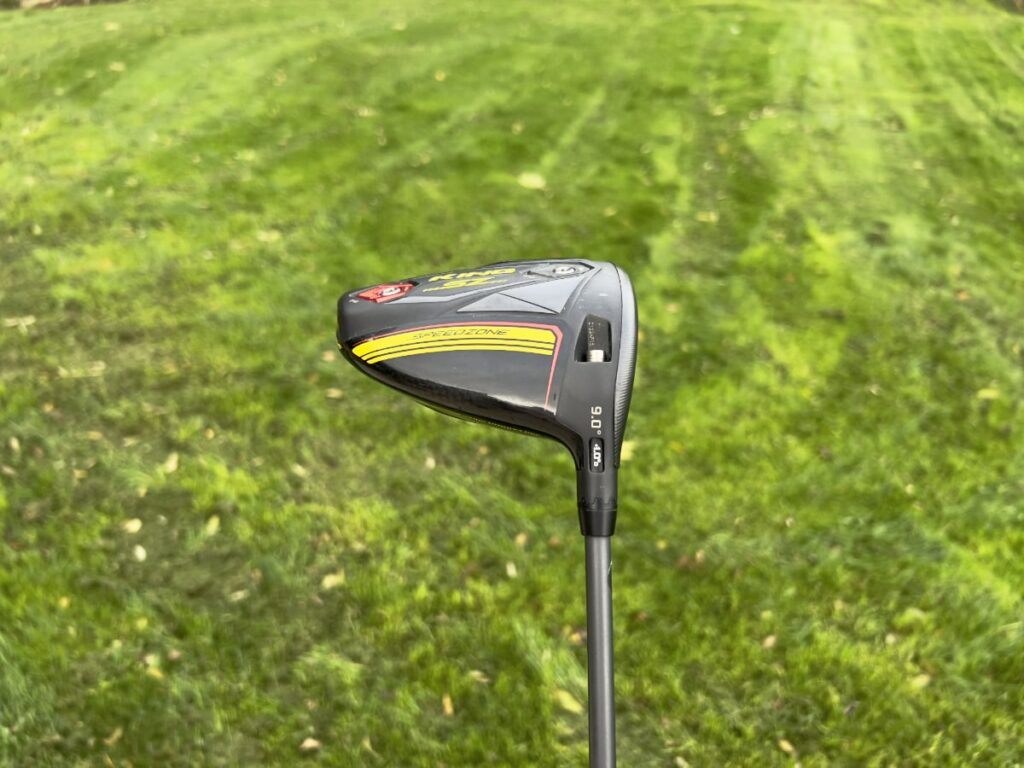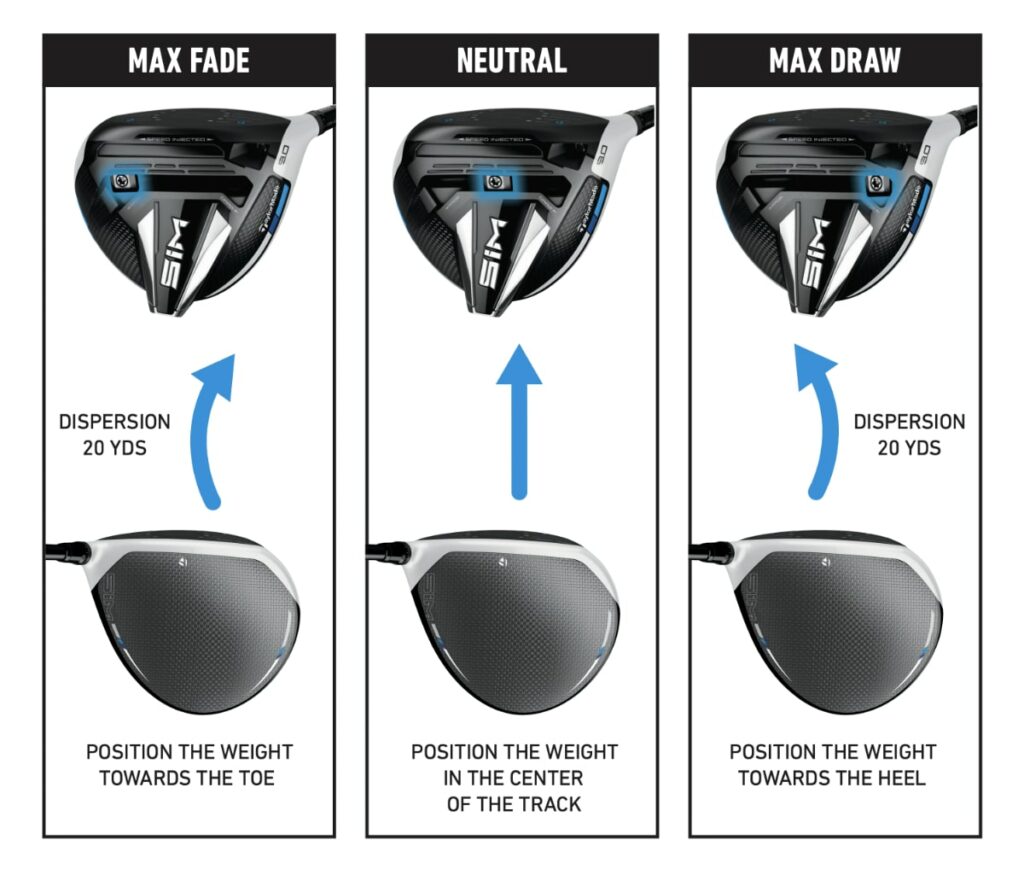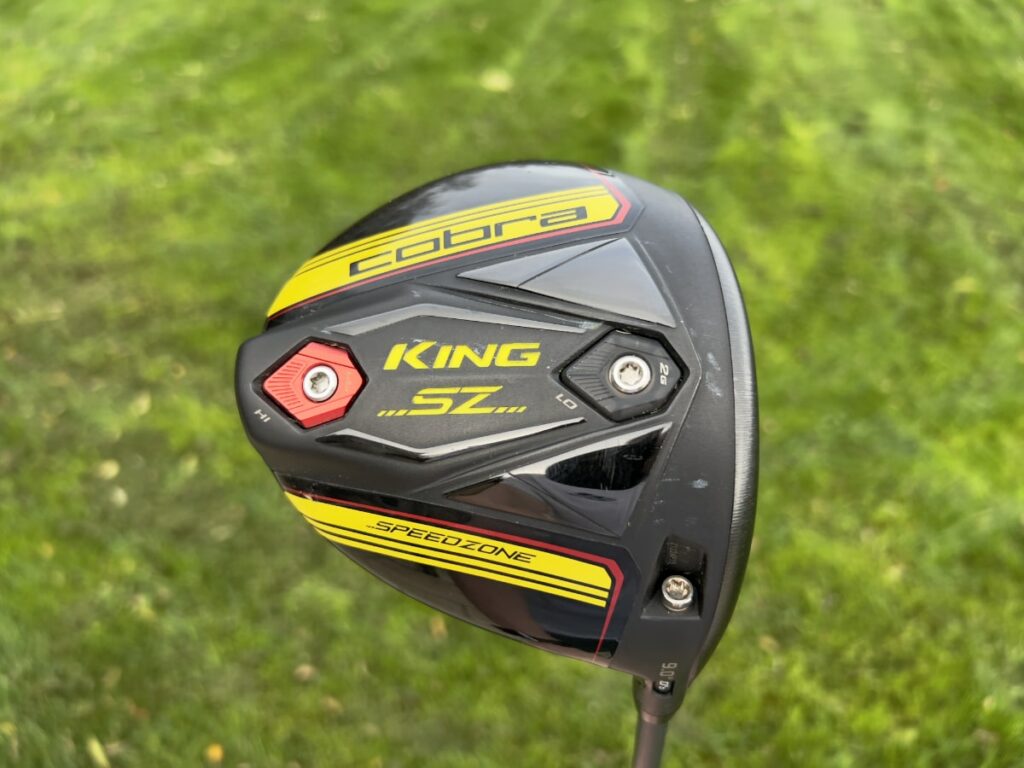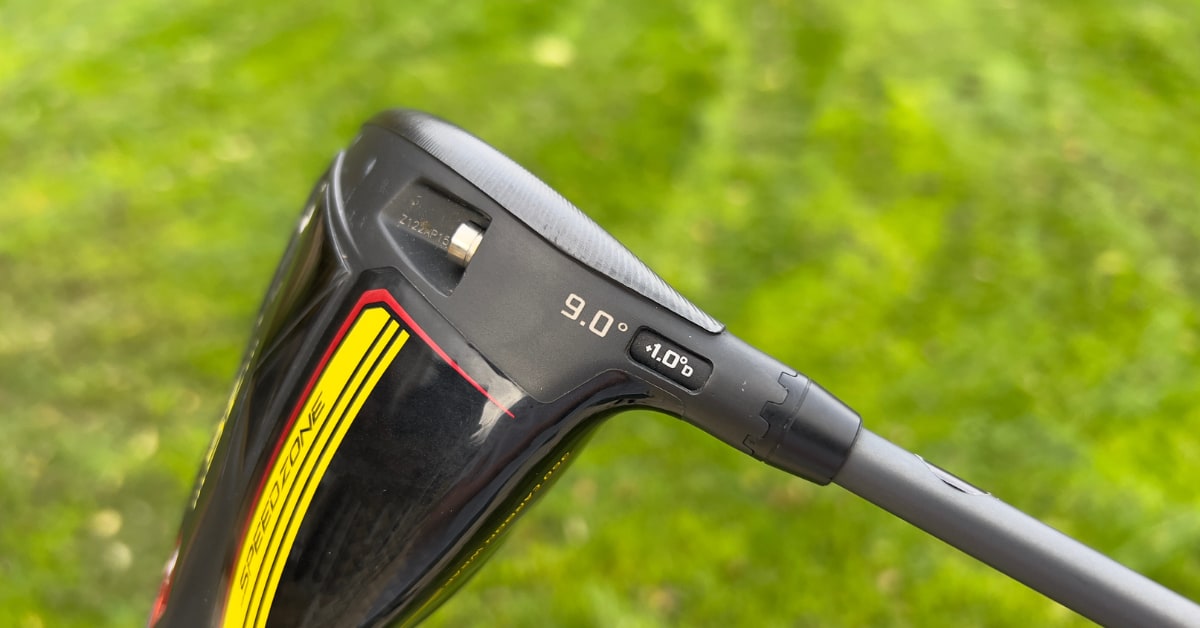- The draw hosel setting on a driver closes the face angle slightly, making it sit more upright to promote a right-to-left ball flight.
- Moveable weights on the sole can also create draw bias by shifting weight to the heel of the club, keeping the face closed at impact.
- While helpful for minimizing slices, the draw setting isn’t a fix-all solution and golfers still need to work on proper swing mechanics to hit straight drives consistently.
Nowadays, most new drivers have some form of adjustability. This can either be a simple hosel adjustment, or moveable weights on the sole of the club.
Adjustable drivers allow you to fine-tune the club for your unique swing. They can be particularly useful for ironing out any flaws in your drives.
So, what does the draw setting do on a driver?
In this article, I’ll explain how the draw setting affects your driver — from the way it alters the look at address, to the effect it has on your tee shots.
What Does the Draw Setting Do on a Driver?
The draw setting on a driver closes the face angle, promoting a draw bias by adding right-to-left spin. This helps counteract slices and encourages a draw ball flight. Also, the draw setting increases the loft angle, which increases launch. It will also make the club sit slightly more upright.
Driver Settings: What You Need to Know
Drivers can be adjusted in two ways:
- Hosel adjustment
- Moveable weights
First, let’s cover how the “draw” hosel adjustment affects the driver setup.
Hosel Adjustment
Generally, when you set an adjustable hosel to the “draw” setting, you are making the club sit slightly more upright with the face more closed.

For instance, in their documentation for their OptiFit Technology, Callaway states that “the draw setting makes the club sit more upright.”
By making the club sit more upright, you are increasing the lie angle. This closes the clubface and promotes right-to-left spin (for a right-handed golfer).
This can be particularly useful for those who tend to slice the ball.
Personally, I can fall into this trap. Having the driver set up in the draw setting with a slightly closed face helps to minimize that severe left-to-right ball flight.
Here’s a table to help understand how the draw and fade settings compare:
| Hosel Setting | Draw | Fade |
| Lie Angle | More upright | Less upright |
| Face Angle | More closed | Less closed |
Moveable Weights
Another draw setting on the driver comes from having moveable weights on the sole of the club. By moving the weight to the heel, you’ll promote a draw.
By adding weight to the heel of the club, you’re slowing down that side through impact. This keeps the face more closed, imparting right-to-left spin on the ball.
The graphic below illustrates the effect of moving weight on the driver:

Moveable weights often exist as a slider, or they are screwed in and can be swapped to alter the position of the weight.
However, this only works by moving weights in the lateral direction.
On some drivers — mine included — the weights can only be swapped front-to-back. This helps with forgiveness and MOI, rather than face angle at impact.

Driver Setting FAQs
Here are a few common questions regarding the draw setting on a driver.
Does the draw setting help fix a slice?
The draw setting on a driver can certainly help minimize your slice. However, it can’t work miracles by fixing huge slices with 20 to 30 yards of movement.
If you consistently slice the golf ball, a draw bias driver can give you a little confidence and sometimes even offer 5-15 yards of shot correction.
The best way to fix a slice still is to focus on keeping the clubface more square at impact. You will need to have the club on the proper path, get the clubface square to slightly closed, and swing through towards the target to hit a straight drive.
What happens if I set my driver to draw?
If you set your driver to draw, you are essentially closing the clubface a bit and making it easier to strike the ball with a less open face. The open face is what puts that slice spin on the ball, making it hard to hit a straight shot.
Does a draw go further than a straight drive?
A draw tends to travel a little further than a straight drive because of the forward spin that a draw imparts on the ball. The forward spin gives you a few more yards of roll once your driver hits the fairway.
Final Thoughts
For the everyday golfer who hasn’t got loads of time to put in work at the driving range, a draw-biased driver is a great option to minimize their slice.
It’s not a perfect solution, but it will help you hit the ball a little straighter.
Golfers who spend more time on the range by working to improve their swing don’t necessarily need to worry about the draw bias setting all that much. Instead, focus on fixing your swing path and keeping the clubface square at impact.


